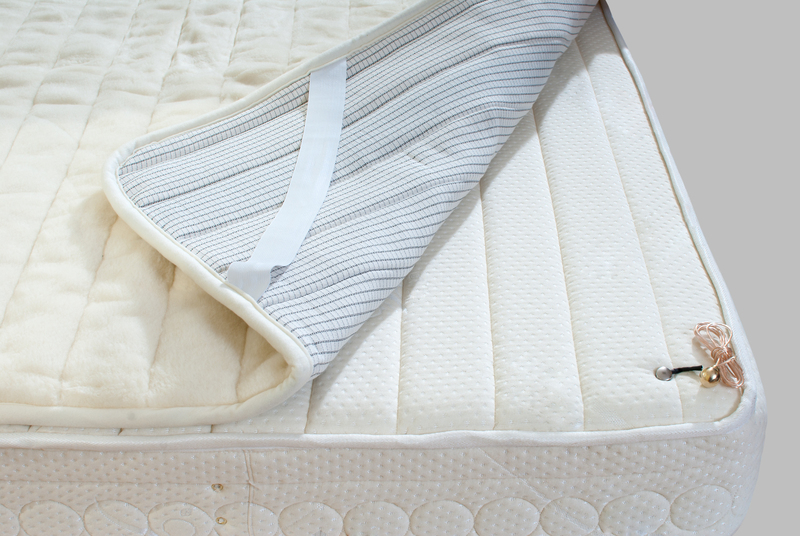The Ultimate Guide to Cleaning Burnt Stovetop Surfaces
Posted on 01/09/2025
The Ultimate Guide to Cleaning Burnt Stovetop Surfaces
Burnt stovetop surfaces are a common kitchen nuisance, turning meal preparation into a frustrating ordeal. Whether you have a gas, electric, or induction stove, burnt residue can build up quickly, reducing the efficiency of your appliance and marring its look. In this comprehensive guide, you'll learn how to clean burnt stovetop surfaces effectively using safe, proven, and convenient methods. Read on for practical tips, step-by-step instructions, and preventative strategies to keep your stovetop sparkling clean!
Why Regularly Cleaning Your Burnt Stovetop Surface Matters
- Improves Kitchen Hygiene: Removing burnt food and spills eliminates bacteria and odor.
- Extends Appliance Lifespan: Regular maintenance prevents long-term damage and corrosion.
- Boosts Cooking Performance: Clean burners heat more evenly and efficiently.
- Enhances Aesthetic Appeal: A spotless stovetop is the centerpiece of a tidy kitchen.
Neglecting your stovetop can result in stubborn stains, smoking during use, and even pose fire hazards. Fortunately, with the right methods, you can restore your appliance to its former glory!

Understanding Stovetop Surface Types
Before undertaking any burnt stovetop cleaning task, it's vital to recognize your stovetop's material. Different surfaces require tailored cleaning approaches to prevent scratches or discoloration.
Common Stovetop Types
- Glass or Ceramic Stovetops: Known for a sleek appearance, but highly sensitive to abrasives.
- Stainless Steel Stovetops: Popular for durability, but prone to scratches and smudges.
- Enamel-Coated Stovetops: Classic and resilient, but can chip if mishandled.
- Cast Iron Gas Burners: Extremely durable yet susceptible to rust if not dried properly.
Always consult your appliance manual before using any new cleaning agent on your burnt stovetop surface.
Essential Tools and Natural Cleaning Ingredients
Gather Your Supplies
- Soft microfiber cloths
- Non-scratch sponges
- Plastic or silicone scrapers
- Old toothbrush
- White vinegar
- Baking soda
- Lemon juice (optional)
- Dawn dish soap or mild detergent
- Spray bottle
- Paper towels
- Gloves (to protect your skin)
Natural agents like vinegar and baking soda are safe and effective for most stovetops. Avoid harsh chemicals or steel wool, especially on delicate glass and ceramic surfaces.
Step-by-Step Instructions: Cleaning Burnt Stovetop Surfaces
1. Let the Stove Cool Completely
Never attempt to clean a hot stovetop. Not only is it a burn risk, but cleaning agents may evaporate or cause dangerous reactions. Wait until the surface is room temperature.
2. Remove Grates and Burner Covers
Take off any removable grates, burner caps, or drip pans. Soak them in warm soapy water separately to loosen grime for easier scrubbing.
3. Dry Scrape Loose Burnt Debris
Use a plastic scraper or old credit card at a gentle angle to lift away loose, charred residue on the stove's surface.
- Tip: Avoid metal tools to prevent relentless scratches, especially on glass stovetops.
4. Apply a Cleaning Solution
Baking soda and vinegar is a classic combination for tackling burnt on messes. Here's how to use it:
- Sprinkle a liberal amount of baking soda over affected areas.
- Fill a spray bottle with equal parts white vinegar and water.
- Spray solution to wet the baking soda, producing a gentle fizz that lifts stains.
- Let the mixture sit for 15-20 minutes.
If the burnt residue is particularly old or tough, make a thick paste of baking soda and water, apply to the spot, and cover with a damp microfiber cloth for an hour.
5. Scrub Gently
Using a soft sponge, scrub the area in circular motions. For hard-to-reach spots around burners or knobs, use a damp toothbrush.
- Note: For glass cooktops, use only scrubbing pads specifically labeled safe for glass.
6. Wipe Down With a Damp Cloth
After scrubbing, wipe off residue with a clean, damp cloth. Repeat steps 4 and 5 as needed for stubborn stains.
7. Clean the Removed Parts
Retrieve the grates, burner caps, and drip pans from their soak. Scrub them with a brush or sponge, rinse thoroughly, and allow them to dry completely before reassembly.
8. Final Polish
For a finishing touch, buff the stovetop with a dry microfiber cloth to remove streaks and restore shine.
Cleaning Tips for Specific Burnt Stovetop Surfaces
Glass or Ceramic Stovetop Burnt Messes
- Use specialized ceramic cooktop cleaner if available.
- Avoid powders and abrasives, which scratch and cloud glass.
- For stubborn, melted plastic, cool completely, scrape gently or use a dedicated scraper for glass surfaces.
Stainless Steel Stovetop Cleaning
- Wipe in the direction of the "grain" to avoid streaks.
- A mixture of vinegar and a little olive oil provides shine after cleaning.
- Pat dry with a soft cloth to prevent water spots.
Enamel-Coated Stovetop Burnt Spot Removal
- For tough spots, use a baking soda paste and let it sit before scrubbing gently.
- Avoid harsh alkaline or acidic cleaners, which can damage the enamel coating.
Gas Burner and Cast Iron Care
- Remove burners and soak to loosen burnt residue.
- Scrub with a non-metallic brush.
- Completely dry and lightly oil after cleaning to avoid rusting.
Dealing With Especially Stubborn Burnt Residue
Some spills, especially sugary or greasy ones, can bake onto your stovetop stubbornly. For heavy-duty cleaning, try these advanced strategies:
Boiling Water Method
- Boil water and carefully pour it over the burnt areas (ensure your stovetop is suited for this, and avoid electrical parts).
- Allow to soak for 15 minutes before scraping and wiping clean.
Commercial Cleaners
- There are dedicated stovetop and oven cleaners formulated to cut through burnt-on messes. Always follow the manufacturer's safety instructions and test on a small area first.
Magic Eraser Sponges
- Products like Magic Eraser can be excellent for mildly abrasive cleaning on tough stains, but use with caution to avoid scratching delicate surfaces.
Professional Services
- If all else fails, consider hiring a professional appliance cleaning service for deeply ingrained, burnt stovetop residue.
Preventing Burnt Stovetop Surfaces
Prevention is the key to minimizing future stovetop cleaning headaches. Adopting these habits will keep your cooktop pristine:
- Wipe spills immediately while the stovetop is still warm (but not hot!), preventing them from baking on.
- Deep clean your range once a week or after heavy cooking.
- Use stovetop protectors or liners (specially designed for your appliance type) to contain spills.
- Keep burners and grates clean and free of grease buildup.
- Regularly check and clean ignition channels so burnt food doesn't interfere with lighting.
Common Mistakes to Avoid When Cleaning Burnt Stovetops
- Using metal tools or steel wool (these can scratch and damage your surface)
- Applying harsh chemicals without checking compatibility with your stovetop material
- Skipping pre-soaking steps for tough stains
- Reassembling burners/grates before they are completely dry, which can lead to rust or residue build-up

FAQs: Burnt Stovetop Surface Cleaning
How often should I clean my stovetop?
Ideally, you should wipe your stovetop after every use and perform a deeper clean weekly or when moderate soiling occurs. Regular maintenance prevents burnt build-up.
Can I use bleach on my stovetop?
Bleach is not recommended for most stovetop surfaces, as it can corrode or discolor them. Stick with mild detergents, vinegar, or baking soda.
What's the best way to clean under the burners?
Remove the grates and burners, then use a damp cloth with a little dish soap. For tough residue, apply baking soda paste, let sit, then scrub. Always make sure all parts are dry before reinstalling.
Is it safe to use razor blades for burnt glass stovetops?
Only use a razor blade specifically designed for glass cooktops and keep it at a low angle. Improper use can scratch or shatter the surface.
Conclusion: Enjoy a Spotless, Burnt-Free Stovetop!
Maintaining a clean, sparkling stovetop is easier than you think! With the right tools and techniques, those pesky burnt-on stains can be history. Whether you're dealing with a mild spill or a deeply charred mess, this ultimate guide to cleaning burnt stovetop surfaces equips you with safe, effective, and eco-friendly solutions for every type of appliance.
Embrace regular cleaning and proactive habits, and your stovetop will continue to shine--making cooking safer, healthier, and so much more enjoyable.
Want more home care tips?
Breeze through more kitchen cleaning wizardry by exploring related articles on stove maintenance, appliance care, and eco-friendly home cleaning methods!




